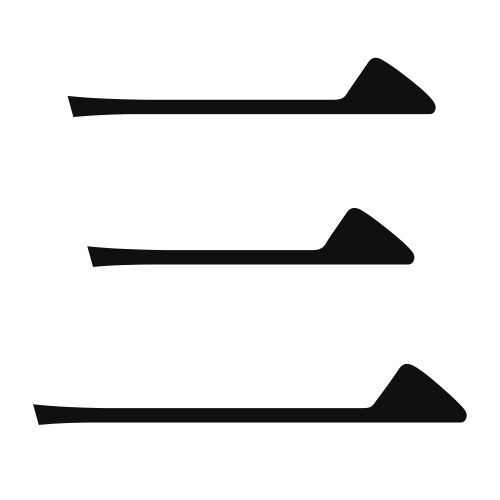1. Overview of Meaning
The kanji “三” (pronounced “san”) means “three.” It is a simple representation of the number and is used in various contexts to denote quantity.
2. Formation and Radical
The kanji “三” is a pictogram that visually represents the concept of three lines, symbolizing the number three. It is one of the simplest kanji characters and falls under the category of pictographs.
The radical for “三” is also “三,” which means it stands alone as its own radical, representing the number three.
3. Examples of Usage
Common words and phrases that include “三” are:
- 三人 (さんにん, “sannin”) – three people
- 三角 (さんかく, “sankaku”) – triangle
- 三日 (みっか, “mikka”) – three days
Example sentences in daily conversation:
- 私には三人の兄弟がいます。 (わたしにはさんにんのきょうだいがいます。) – I have three siblings.
- 三角形を描いてください。 (さんかくけいをかいてください。) – Please draw a triangle.
4. Synonyms and Antonyms
Similar kanji with related meanings include:
- 二 (に, “ni”) – two, which represents one less than three.
- 四 (し, “shi”) – four, which represents one more than three.
Antonyms or contrasting kanji include:
- 一 (いち, “ichi”) – one, which is the smallest whole number.
5. Cultural and Historical Background
The number three holds significance in Japanese culture, often associated with harmony and balance. For example, the phrase “三位一体” (さんいったい, “san’ittai”) refers to the concept of three entities being united as one.
Proverbs and idioms that include “三” are:
- 三度目の正直 (さんどめのしょうじき, “sando-me no shōjiki”) – “third time’s the charm,” meaning that after two failures, the third attempt is likely to succeed.
